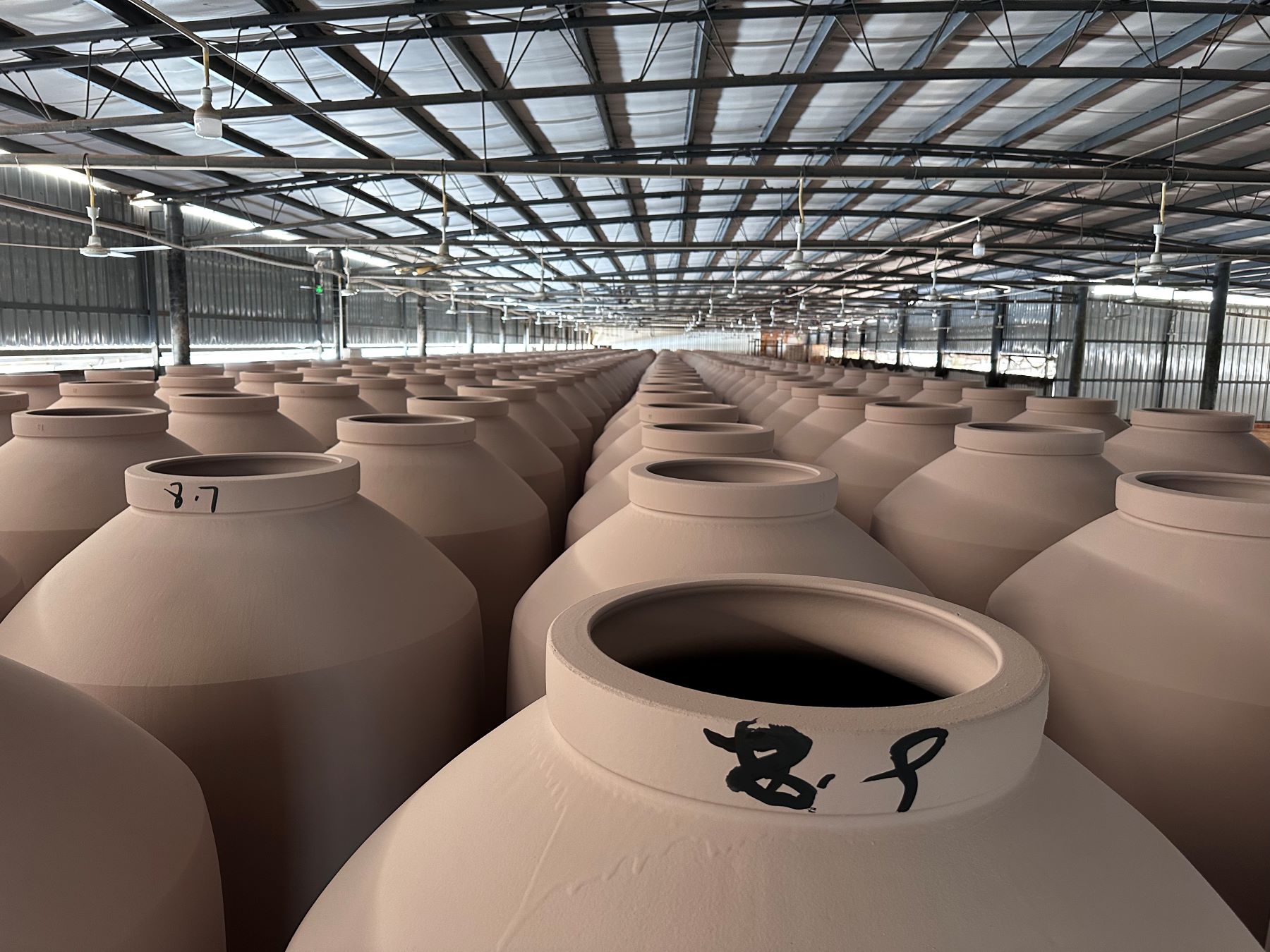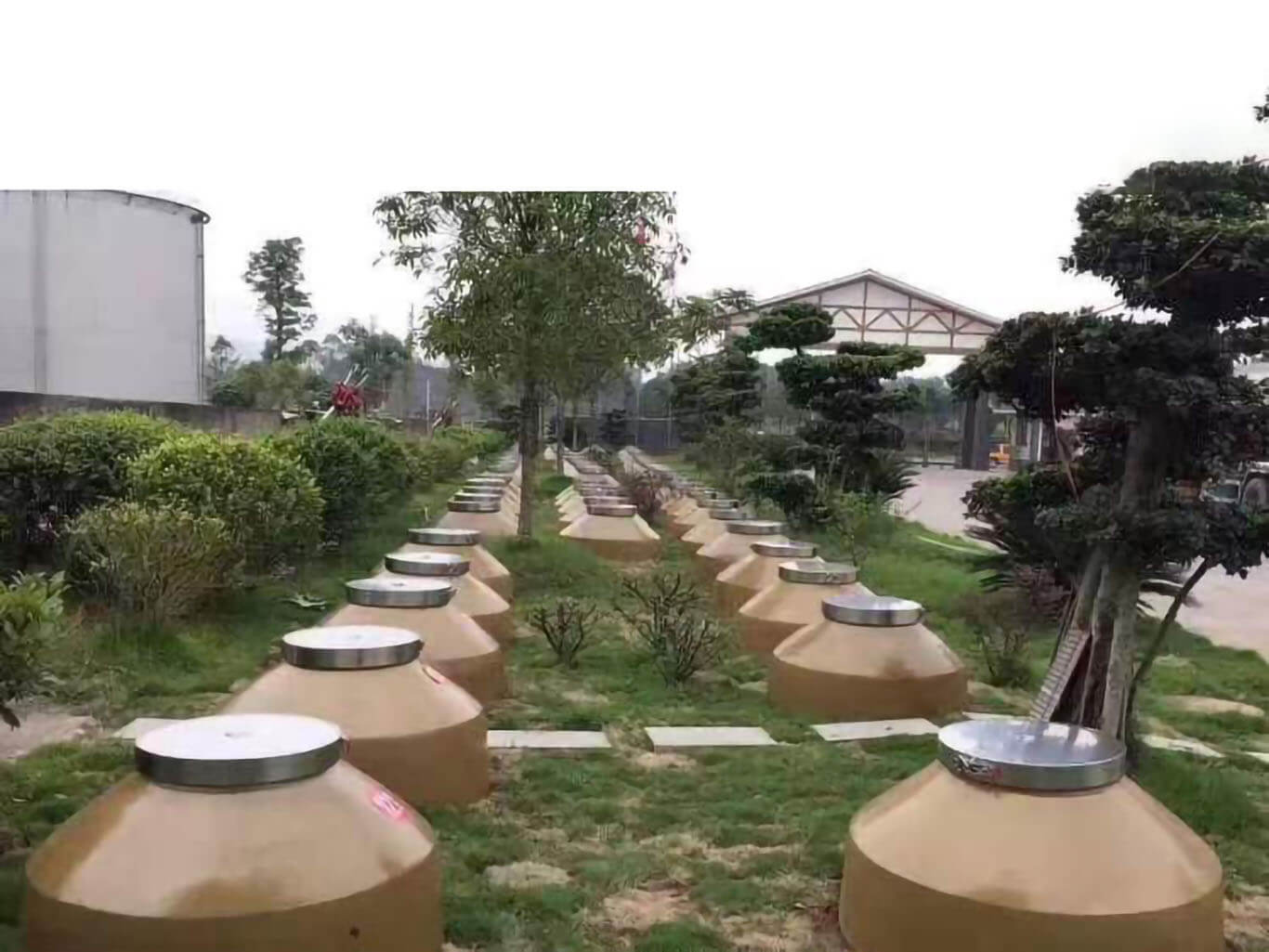Understanding the Benefits of Aging Wine in Clay wine jar
More and more winemakers and wine lovers are pursuing how to make more pure, natural and local wine.
At present, using clay wine jars and amphora wine making has become a trend and development trend. Clay wine jars, based on their material properties, have excellent breathability and can create a healthy micro oxidation environment for wine making. They can perfectly balance the rich flavor of oak barrel brewing with the inertness of stainless steel brewing. This article provides an in-depth analysis of the method of aging wine in clay wine jars, in order to reveal the secret of successfully aging wine in wine jar
Why choose clay wine jar aging?
Before discussing how to do it, it is necessary to understand the unique advantages that aging wine in clay wine jar offers compared to mainstream oak barrels and stainless steel
Micro oxygenation: Firstly, the biggest feature of using clay to age wine is that the porous nature of the clay allows trace amounts of oxygen to continuously and slowly come into contact with the wine. This is similar to oak barrels, but the process is milder and more uniform, softening tannins and making the wine more rounded without adding any oak flavor.
Thermal Inertia: Secondly, clay wine jar can buffer external temperature fluctuations, providing a more stable and cool aging environment for wine, promoting the slow fusion and development of aromas.
Mineral Exchange: Again, during the actual aging process, subtle ion exchange occurs between the wine and the clay jar walls, which is often believed to add an indescribable and pleasant mineral texture or salty flavor to the wine.
Purity of Expression: Lastly, and most importantly, the core attraction. clay wine jar aging allows for the most authentic display of the original characteristics of grape varieties and terroir, therefore, clay jar winemaking and aging are highly respected by natural wine makers.
Understanding the Four Steps of Clay Wine Jar Aging
Step 1: Selection and Preparation
Choosing a high-quality clay wine jar or clay amphorae is a prerequisite for all work. Therefore, we need to consider the following three factors:
● Inner wall treatment: Firstly, you need to decide whether to use traditional unglazed Clay Jars or modern cans with Partially Sealed Interior. Their biggest difference is that the unglazed terracotta jar can achieve maximum oxidation and mineral exchange, while the Partially Sealed Interior can achieve more precise control over oxidation operations. Compared to novice novices, partially glazed pipes have a higher fault tolerance rate.
● Can opening: New cans must be saturated and soaked before use. Fill it with clean water and let it stand for at least 24 hours until the clay no longer absorbs water. This step can prevent the jar from snatching water from the wine.
● Cleaning and maintenance: After use, the clay wine jar needs to be cleaned and disinfected (such as using food grade citric acid solution), and ensure complete dryness to prevent any odor or contamination.
Step 2: Filling the Jar
Pour the wine that has completed primary fermentation into the prepared jar. Here are the specific operation methods:
● Filling amount: When injecting wine, it is necessary to leave a certain headspace in the clay wine jar, and it is best to fill it below the pot strength. To accommodate the expansion of the wine due to temperature changes, while allowing a small amount of air to participate in the aging process.
● Sealing selection: The sealing method affects the aging style. You can use a glass lid, wooden stopper, or even seal with a thin layer of olive oil. Each method will result in varying degrees of oxidation.
Step 3: The Aging Environment and Care
Ideal environment: Place wine jar in the Cool Dark Cellar. A stable low temperature (10-15 ° C) and dark environment are crucial.
Monitoring: Regularly inspect wine jar for signs of leakage. Every few months, you can gently taste the wine and track its development. Wines aged in clay may undergo slower and more subtle changes than those aged in oak barrels.
Step 4: Bottling
When the wine reaches your ideal equilibrium point, it can be bottled. Due to the fragility of clay aged wines, it is recommended to minimize filtration as much as possible to preserve their texture and flavor.
Professional manufacturers provide personalized solutions for successful aging
As a professional terracotta amphorae manufacturer, we are well aware of every detail of the aging process. Our product design aims to address the core concerns of winemakers:
We design for successful brewing
● Material selection: We use natural high-quality clay rich in mineral ingredients to promote beneficial micro oxidation while avoiding any bad earth smell.
● Structural Integrity: Our clay wine jars undergo High Fire Kiln Treatment (fired at temperatures exceeding 1200 ° C), which provides excellent thermal shock resistance and structural durability, ensuring that wine jars will not crack during long-term aging.
●Customized Oxidation Control: We offer various options from completely unglazed to glazed at different locations inside, allowing winemakers to precisely select the desired oxidation level, just like choosing oak barrels with different degrees of baking.
Our manufacturing capability and support
About Us: Hexin is a professional wine jar manufacturer with nearly 50 years of rich experience.
Our advantage: As a clay factory, we have an area of over 60000 square meters. The company has a sound management system and strict product quality control system to ensure quality.
Clay Wine Jars Aging Common Problems
Q1: What is the biggest risk of aging wine in clay wine jars? How to avoid it?
The biggest risk is excessive oxidation and pollution.
Firstly, it is important to choose (or customize) clay wine jars with inner wall treatments (unglazed or partially glazed) that are suitable for your brewing style, as this is the key to avoiding excessive oxidation.
Secondly, it is important to pay attention to daily cleaning and hygiene habits to avoid pollution. This ensures that the pipe is in a completely clean and dry state before each use.
Q2: What is the main difference in flavor between wine aged in clay wine jars and oak barrels?
Differences: Compared to traditional oak barrels, high-quality clay wine jars do not add any external flavor, while wine aged in oak barrels gives it rich flavors such as vanilla, coconut, and smoky.
Working principle: In the actual aging process, it only acts as a “catalyst” to enhance and polish the inherent fruity and mineral flavors of the wine through micro oxidation and mineral exchange, making the aged wine more round, complex, and pure in taste.
Q3: What is the service life of a clay jar? Do we need to ‘renovate’ like oak barrels?
finely crafted clay wine jar, if properly maintained, can have a lifespan of several decades. It does not require physical refurbishment like oak barrels. Its internal ‘flavor potential’ will not be exhausted like oak. As long as it is kept strictly clean, it can be reused repeatedly. Over time, a beneficial layer of tartaric acid crystals may even form on the jar wall.
Conclusion:
When aging wine in clay wine jar, we not only need to understand the natural advantages of clay wine making, but also pay attention to the real reasons behind it and gain a deeper understanding of the differences between clay wine jars and traditional wine fermentation containers. In addition, mastering the usage method is also an important factor for successful brewing. Whether you are a master brewer or a novice in the industry, using clay wine jars to make wine is the most correct choice.


